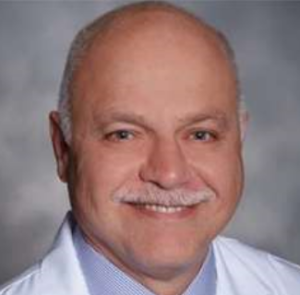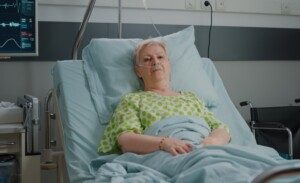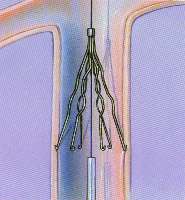What should be done when a patient gets a DVT in the neck after coronary bypass surgery?
Seems like an SVC filter should be placed?
Following coronary bypass surgery (a.k.a. CABG), it’s possible for a patient to develop a DVT in the neck.
This happened to my mother following her CABG.
“She has a big DVT,” I was told by the nurse after results of the ultrasound came in.
It’s scary to hear that your mother has a “big DVT” in her neck.
DVT stands for deep vein thrombosis. Fragments of, or the entire clot, can break away from where it’s lodged and travel to the lungs. This holds especially true if the clot is in the jugular vein.
In the lungs it could interfere with breathing. Depending on its location, it could cause death very quickly. So of course, knowing all this, I was very worried.
But nothing was done in the case of my mother. They just let it be; no intervention to prevent the clot from traveling to her lungs.
This was extremely worrisome, as her left arm kept getting bigger and bigger from the swelling induced by the DVT.
At the time, I didn’t know about an SVC filter, which is designed to prevent a dislodged portion of a DVT from entering the lungs and becoming a potentially fatal pulmonary embolism.
SVC stands for superior vena cava — a major vein located above the heart.
This vein transports de-oxygenated blood from the upper body to the heart so that it gets re-oxygenated.
After learning about the SVC filter long after my mother had been released from the hospital, I’ve always wondered what the doctors’ responses would have been had I insisted on an SVC filter placement for her.
“Most of these DVTs would be labeled as provoked, most often secondary to central venous catheters,” says Seyed-Mojtaba (Moji) Gashti, MD, a board certified vascular surgeon with Broward Health Medical Center in Florida.
“Generally these are focal and limited to the site of the catheter (most often in the internal jugular vein). These can be watched.
“But if the thrombus extends to the subclavian/innominate veins, then most physicians would consider anticoagulation if there are no contraindications.”
Following CABG, a patient can bleed to death from anticoagulant drugs.
“If anticoagulation is contraindicated, then an SVC filter would be indicated,” says Dr. Gashti.
“The SVC is much shorter than the IVC [inferior vena cava], and therefore placement of a filter in the SVC is technically more challenging. You have to make sure the length is adequate.
“Currently there are no filters in the market indicated for SVC, and if you place one, it would be off label.”
This means, for instance, that a filter that’s designed for the inferior vena cava (IVC, below the heart) could be placed in the superior vena cava.
Thus, the procedure is possible, but the mere presence of a DVT in the neck of a CABG patient won’t automatically mean that an IVC filter will be placed in the superior vena cava. The patient’s condition and other factors will need to be weighed.

Dr. Gashti specializes in the diagnosis and treatment of vascular disease including abdominal and aortic aneurysm. He received his medical degree from University of New England College of Osteopathic Medicine and has been in practice for more than 20 years.
 Lorra Garrick has been covering medical, fitness and cybersecurity topics for many years, having written thousands of articles for print magazines and websites, including as a ghostwriter. She’s also a former ACE-certified personal trainer.
Lorra Garrick has been covering medical, fitness and cybersecurity topics for many years, having written thousands of articles for print magazines and websites, including as a ghostwriter. She’s also a former ACE-certified personal trainer.
.










































